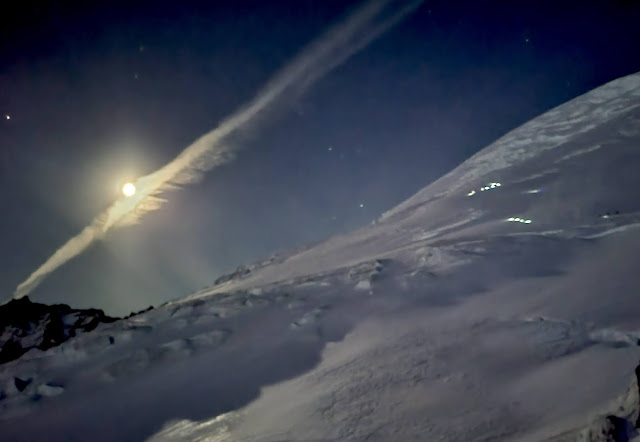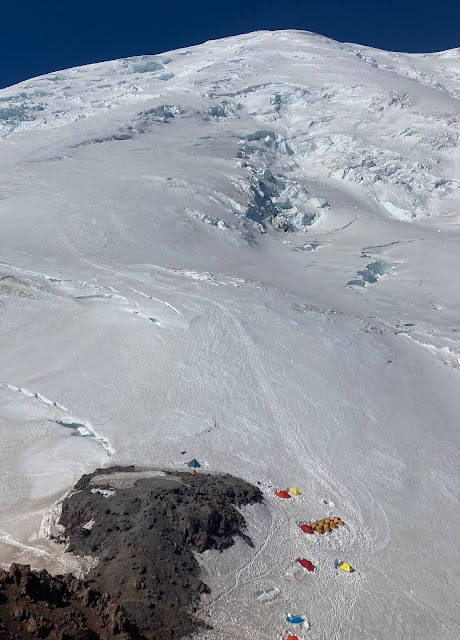The record breaking heat of the past week has had a pronounced effect on the condition of the Emmons/Winthrop Glacier Route. Freezing levels have been hovering around 17-18,500 feet since Friday! Most of Washington State and Oregon set new ALL TIME high temperature records by a large margin over the weekend! It is extremely uncommon to see freezing levels this high (most of us have never seen it) in an entire summer, let alone June, a month commonly punctuated by unsettled and sometimes winter-like weather on the mountain. What makes it even more unusual is that freezing levels are not dropping over night. Therefore, the typical diurnal melt-freeze process has been non-existent for almost a week.
Which brings us to current route conditions: Things have changed immensely over the past week and are continuing to change by the hour. Rangers, along with many independent climbing and skiing parties, summited on Saturday, June 26th. At that time there had been little change in the overall route since the climbing season began - it went straight up past "The Corridor" and through the bergschrund to the Crater Rim. As the temperature climbed and nights stayed warm, the seasonal snow cover began to rapidly melt. Many more crevasses and even glacial ice are now visible along The Corridor. Word from recent attempts indicate that the bergschrund is now impassible. No one summited on 6/30 and all guided teams and most independent parties did not even leave Camp Schurman due to crevasse-fall hazard. One party of skiers attempted the summit on the morning of 6/30 and were turned around at approximately 12,500' due to a crevasse bridge that had collapsed.
 |
| Climbing ranger ascending the Emmons on Saturday, June 26 2021. |
Unfortunately, weather forecasts indicate that it will continue to be unseasonably warm at Mount Rainier through the coming weekend and into early next week, and climbing conditions aren't likely to improve substantially. Freezing levels remain above summit elevation for the foreseeable future. That coupled with the necessity of someone finding a new route up the glacier means that the chances of "success" (i.e., getting to the summit of Mount Rainier) might remain elusive until colder weather conditions return to Mount Rainier National Park. However, there appear to be several viable options for a new route variation to the top. It's just a matter of time until climbers find the way and the route 'goes' again. This is the nature of climbing on Mount Rainier in the summer.

































